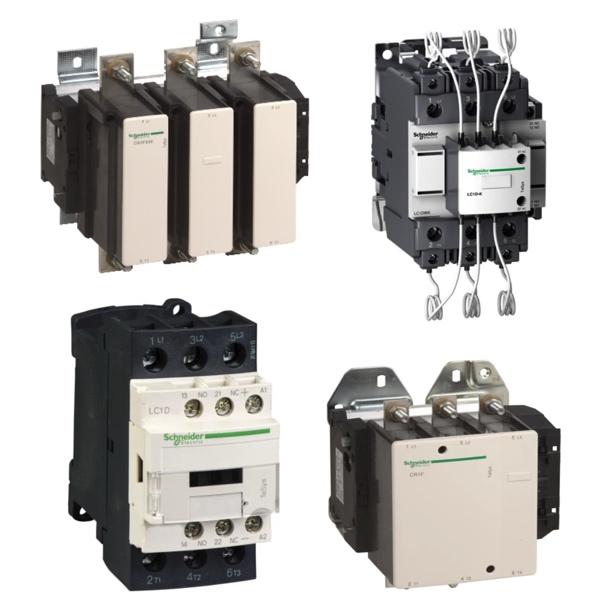IEC Specialty Contactors

Specialty contactors are designed for specific applications that go beyond standard motor control. They are tailored to meet the unique requirements of various industries, environments, or operational conditions. These contactors incorporate specialized features or modifications to enhance their performance and functionality in specialized applications.
One example of a specialty contactor is the lighting contactor, which is used to control large lighting systems in commercial buildings, stadiums, or outdoor installations. These contactors can handle high inrush currents and provide centralized management of multiple lighting circuits.
Another type is the capacitor contactor, designed for power factor correction systems. They handle the switching and control of capacitors, ensuring efficient operation by managing reactive power and preventing excessive inrush currents during capacitor energization.
There are also other specialty contactors for specific applications such as HVAC (Heating, Ventilation, and Air Conditioning) systems, elevators and escalators, conveyor systems, and industrial machinery. These contactors are designed with features and capabilities to meet the specific needs of those applications, ensuring optimal performance and safety.
Motor Control Basics
Motor control allows operational control of electrical motors in various environments.
Motor control circuits provide a safe way to operate electrical motors. Back when motor control circuits were in their infancy, it would have been common to see a simple disconnect switch that would be used to turn on and off a motor. Depending on the size of the motor and how much voltage was required, operating this disconnect would have been dangerous, with a very high possibility of arcing or electrocution. Not to mention that when the disconnect was actuated, the large amount of inrush current would have damaged the motor over time.
In today's motor control circuits, there are a few common pieces of hardware.
A circuit breaker is used to protect the motor and any hardware downstream. A contactor and an overload relay are connected together and function in tandem to allow for remote and safe operation of the motor. The contactor functions much like a relay, allowing for a smaller electrical circuit to remotely close the motor contacts, starting the motor. The overload relay is designed to protect the motor in the case of a prolonged overcurrent event. These two devices are wired in series, so that if the overload relay detects an overcurrent event, the contactor will open the motor contacts, shutting off power to the motor.
The other two most common types of motor control hardware are a soft starter and a Variable Frequency Drive (VFD).
Both of these devices function in a similar way to the motor circuit with some added functions. The soft starter is designed to reduce large inrush current to the motor upon startup. This “soft starting” of the motor will prolong its life and allow for safer operation. The VFD performs the soft start functions, but also allows for speed control of the motor. This speed control is critical in many different environments and has made VFDs one of the most common and safe to use motor control circuits today.

